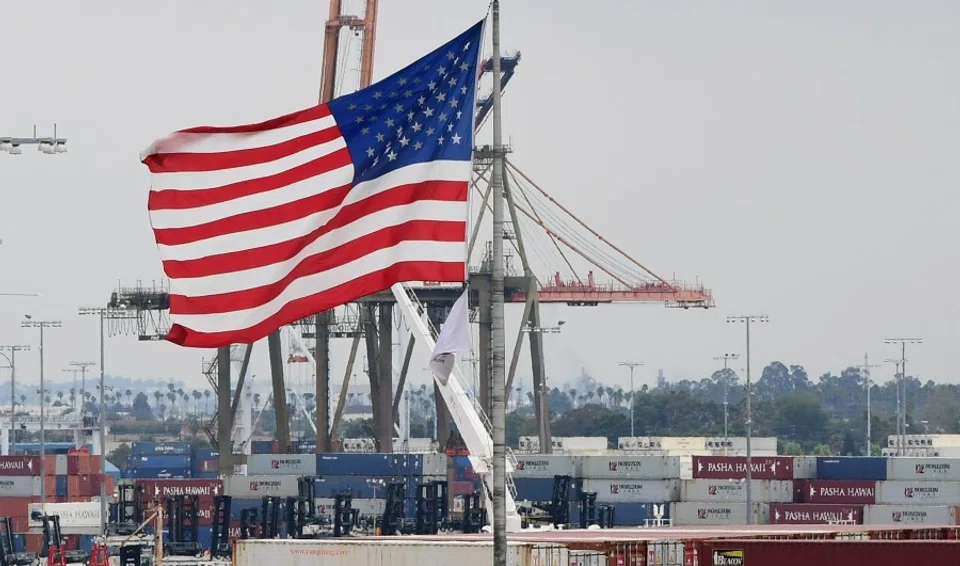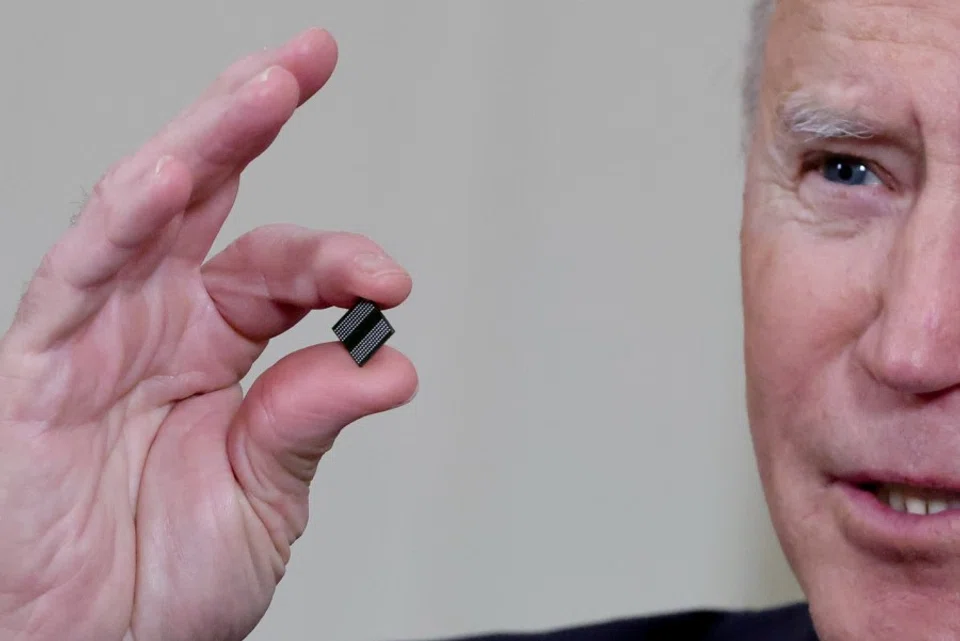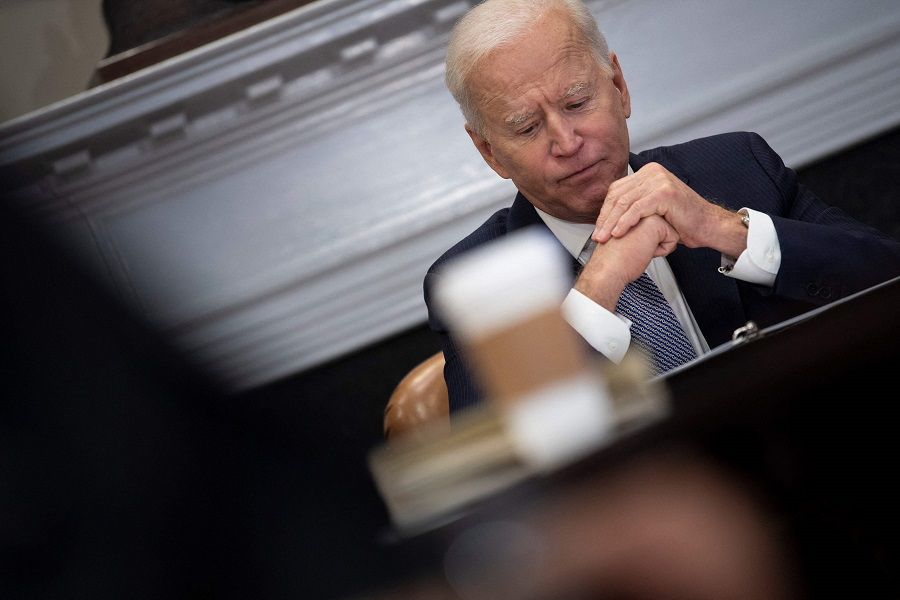The politicisation of China-US trade ties: Showdown between capitalism and communism?

Trade relations have always been the ballast in China-US relations. But since the China-US trade war began in 2018 and coupled with the coronavirus in 2020, China and the US are now in a state of political opposition. Such a state of affairs has weakened and even put pressure on trade relations. While China-US trade relations have continued to move forward, they have been ineffective as the ballast to ease bilateral political opposition.
The Trump administration in its later stages put the blame for this political opposition on China's ruling party. And while the Biden administration so far has not blamed China's ruling party, it has not alleviated political opposition either. On the contrary, its seemingly mild moves are worsening the face-off. The executive order that Biden signed on 3 June - to address the threat posed by China's military industrial complex - has put a stamp of politicisation on China-US trade relations. In fact, the politicisation of China-US trade relations is a key angle in the assessment of future China-US trade relations.
Investment bans with political objectives
First, Biden's investment ban expansion on China companies stems from political considerations. The 3 June executive order was intended to stop US entities from investing in 59 companies with links to the Chinese military; these 59 companies are in the defence and surveillance technology sectors.
Defence concerns the military competition between China and the US, while surveillance technology has to do with the violation of human rights by what the West calls "digital authoritarianism". The military is the US's last defence against China, and human rights is its moral high ground. Both serve towards the tussle of values and political system between China and the US. With the US extending politics to trade, China-US trade ties have been politicised, and the measures open to the US are to limit investments and exports. Even with a rough understanding of China-US military competition and digital authoritarianism, one can clearly see the logic behind the politicisation of China-US trade ties.

China-US relations are tense, and their military competition is obvious. Both sides are preparing for possible military conflict. In January this year, a report by the Congressional Research Service (CRS) said: "China's navy is viewed as posing a major challenge to the US Navy's ability to achieve and maintain wartime control of blue-water ocean areas in the Western Pacific - the first such challenge the US Navy has faced since the end of the Cold War - and forms a key element of a Chinese challenge to the longstanding status of the United States as the leading military power in the Western Pacific." China now has more warships than the US Navy, making China's navy the largest in the world.
Soon after taking office, Biden established a task force to address the challenges posed by China. He said, "We need to meet the growing challenges posed by China to keep peace and defend our interests in the Indo-Pacific and globally... [The task force] will look at our strategy and operational concepts, technology, and force posture."
On 9 March, Admiral Philip Davidson, commander of the United States Indo-Pacific Command, testified in front of the Senate Armed Services Committee that China poses the greatest strategic challenge to the US, and is a long-term strategic threat in the 21st century. He added that "the greatest danger the United States and our allies face in the region is the erosion of conventional deterrence vis-a-vis the People's Republic of China". Media reports said that a report from US Indo-Pacific Command delivered to Congress called for roughly US$27 billion in additional spending between 2022 and 2027 to handle China, including purchasing new weapons and stepping up military partnerships and exercises with allies.
China has actively responded to the US challenge. On 5 March, the government budget announced at the National People's Congress showed a defence budget of about US$209 billion for China. On the discussion among the international community about the increase in China's defence spending, retired Rear Admiral Luo Yuan said, "This is our domestic business. Now we have enough to eat and drink, we have some savings, so what's wrong with us preparing a few sticks to beat off dogs and protect the fruit that we worked so hard for?"
On 23 April, China commissioned a ballistic missile submarine, guided-missile destroyer, and an amphibious assault ship - the Type 094A submarine can fire a JL-3 guided missile with a range of over 10,000 kilometres. The South China Morning Post quoted a source close to the Chinese Navy saying that the Type 094A submarine coupled with the JL-3 missile was strong enough to cover the whole American continent.
On the surface, the China-US trade war seems to be about bilateral trade imbalance, but it is essentially a contest between a market-led and a state-led market economy model. This is the reason why China and the US were able to sign a phase one trade agreement, but there is almost no chance for signing a phase two agreement.

The military competition between China and the US has led the commandant of the US Marine Corps General David Berger to say that while war is not inevitable, the competition between the two countries will continue. Looking at the China-US trade war in terms of their military competition, the US will only ramp up its investment and export restrictions on China. Investments and exports would affect technology transfer, and technology determines the standard of military equipment. A report by the US think tank Foundation for Defense of Democracies said that "countless" Chinese entities support China's military and military-civil fusion (MCF) system internationally, and the companies that the US has listed thus far represent just the tip of the iceberg.
China's online management methods are seen by the West as digital authoritarianism. This government-built approach of internet surveillance and information monitoring is not just adapted for various uses in China, but has also been exported to other countries. The US Senate Committee on Foreign Relations previously published a report titled The New Big Brother: China and Digital Authoritarianism.
The report details how the Chinese government uses technology as a tool to create a system of digital authoritarianism in the digital sector, and develops artificial intelligence, facial recognition, and the 5G network to implement large-scale surveillance and information control, and exports this model to other countries such as Venezuela, Uzbekistan, and Zimbabwe. Looking at China-US trade relations in terms of digital authoritarianism, of course, the US would blacklist companies such as the Hangzhou Hikvision Digital Technology Company (Hikvision).
China-US trade war set for further ripples
Secondly, the China-US trade war will inevitably be politicised. On the surface, the China-US trade war seems to be about bilateral trade imbalance, but it is essentially a contest between a market-led and a state-led market economy model. This is the reason why China and the US were able to sign a phase one trade agreement, but there is almost no chance for signing a phase two agreement. The phase one trade deal involves China's pledge to buy massive amounts of US goods that can help alleviate the bilateral trade imbalance. However, the core of what's left behind, that is, the push for economic structural changes, involves China's economic model.

An obvious advantage of China's economic model is that it is able to bring all its powers to bear on accomplishing big things. Under the leadership of the government, this massive country with a population of 1.4 billion people has trained its national resources on a partial integration with the global market economy, and caught up with all the emerging technologies of developed countries within a few decades. It has even built those sectors into industries which are among the largest in the world. While it cannot be said that China has surpassed the West in the field of emerging technologies, China's development speed has shocked Western countries and made the US anxious and worried.
The spillover effects of China's economic model has garnered widespread criticism from Western countries. The 2021 Trade Policy Agenda released by the Office of the United States Trade Representative states that "China's coercive and unfair trade practices harm American workers, threaten our technological edge, weaken our supply chain resiliency, and undermine our national interests". It adds that these practices include "China's tariffs and non-tariff barriers to restrict market access, government-sanctioned forced labour programmes, overcapacity in numerous sectors, industrial policies utilising unfair subsidies and favouring import substitution, and export subsidies" as well as "coercive technology transfers, illicit acquisition and infringement of American intellectual property" and so on.
If we consider the politicisation angle, there is virtually no solution to the China-US trade war. China believes that its success is all thanks to the right path that it has taken - why should it dance to the US's tune and bring about structural changes to its economy? To the US, China's state capitalist and mercantilist economic system has resulted in unfair trade practices, destroyed international economic rules, and damaged the interests of other countries.
If China makes structural changes according to the US's wishes, it would lose the advantages that its economic model offers. For example, Western countries have accused China of distorting the market by implementing "industrial policies utilising unfair subsidies". Yet, this is one good example of China bringing all its powers to bear on accomplishing big things. Without subsidies, the bulk of China's emerging industries such as high-speed rail and new energy vehicles would fail. Under the leadership of the Chinese government, the success of each industry can be supported by huge national resources and China's large market. No other country is able to do this.
The US's demand for China to abolish its subsidies is no different from asking China to destroy itself. China's sense of victimisation at foreign hands and its belief in "imperialism's incessant desire to crush China" (帝国主义亡我之心不死) would immediately be triggered.

The US's demand for China to abolish its subsidies is no different from asking China to destroy itself. China's sense of victimisation at foreign hands and its belief in "imperialism's incessant desire to crush China" (帝国主义亡我之心不死) would immediately be triggered. Due to a difference in values, as anticipated, the US would consider China's strong economic growth a threat that could jeopardise its military and technological development or even weaken its global leadership, making it difficult for the US to compromise on its economic and trade relations with China. Thus, the China-US trade war would inevitably be escalated to the political level.
Decoupling of supply chains
Thirdly, the decoupling of "critical supply chains" is a sign of the politicisation of China-US economic and trade relations. The partial decoupling of China-US economic and trade relations started in the days of the Trump administration and has carried on into the Biden era. On 24 February, Biden signed an executive order demanding a "100-Day Supply Chain Review" of global supply chains and the US's potential vulnerabilities in critical industries. These industries include computer chips, electric-vehicle batteries, and critical minerals used in the manufacturing of drugs and electronic products.
On 8 June, the US Department of Defense published the Strategic and Critical Materials Review. According to the report, "China dominates the processing of strategic and critical materials" at present. Thus, during a national emergency as a result of a military confrontation, the US is "likely to face inadequate supply of these materials due to an inability to access foreign sources". The report recommended that the US should diversify strategic and critical material supply chains, strengthen its cooperation with allies rich in mineral resources such as Canada and Australia, and enhance domestic processing and recycling efforts of strategic and critical materials via coordinated actions across the government.

That same day, the Biden administration also announced that it would form a new "strike force" targeting China's unfair trade practices. Led by the Office of the United States Trade Representative, this "supply chain trade strike force" would track down specific violations that contributed to a "hollowing out" of supply chains and later address them with trade remedies. Undoubtedly, China is one of the targets of this measure.
Clearly, the "critical supply chains" referred to by the Biden administration points to the decoupling of economic and trade relations with China. At the heart of decoupling lies in a distrust of China. In the words of Biden himself: "We shouldn't have to rely on a foreign country - especially one that doesn't share our interests or our values - in order to protect and provide our people during a national emergency."
China-US economic and trade ties are partially decoupling as the US reconstitutes its global supply chains. On 11 May, the US established the Semiconductors in America Coalition consisting of 65 major players along the semiconductor value chain. The coalition is dominated by American tech enterprises Apple, Microsoft, Google, and Intel. Taiwan Semiconductor Manufacturing Company (TSMC) is also a member. Locked in the US's tight embrace, TSMC is firmly adhering to the US's Entity List of blacklisted Chinese companies.
The high degree of politicisation of China-US economic and trade relations is essentially a showdown between capitalism and communism in the 21st century. This showdown will show the world where the destiny of mankind is headed.
Related: While the US sets new goals for G7, China sets new goals for itself | Singapore PM Lee Hsien Loong: If America and China clash, everything will be lost | Strategic Competition Act: The US targeting China through Cold War politics? | Are two camps forming around China and the US? | Indo-Pacific: Central theatre of America's struggle against its antagonist, China
